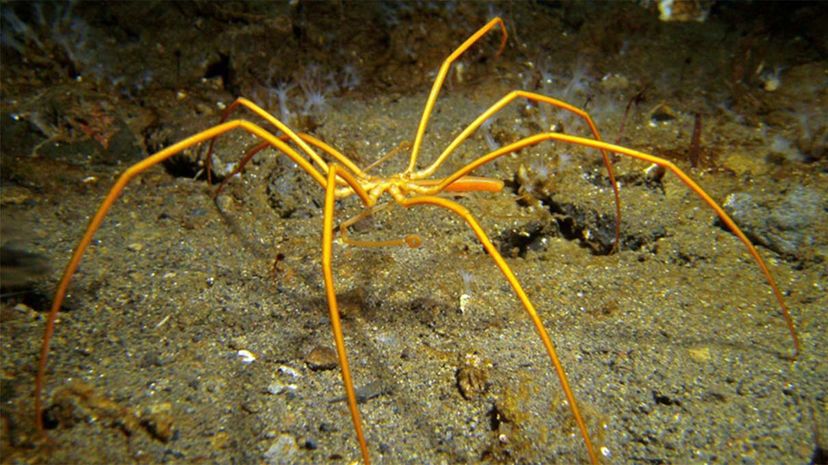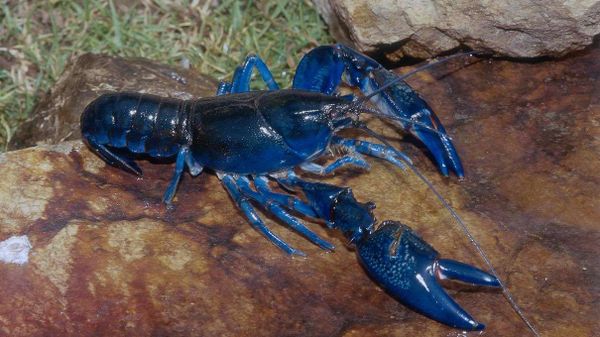
Unsurprisingly, a human doesn't have much in common with a sea spider. Actually, no other organism on Earth has much in common with one of these spindly-legged arthropods, either. The top five weird things about them:
- Their genitals and most of their digestive system are encased in their delicate legs.
- Their hearts are so weak that they require the digestive system to move blood around the body.
- The males carry the young.
- They eat by sticking their proboscis into a mushy sea creature and sucking out its juices.
- Until recently, nobody could figure out how they breathed.
Strange as they may be, sea spiders occupy marine habitats the world over, in deep and shallow waters. They can be miniscule, with a leg span of only a millimeter, but the sea spiders in Antarctica grow to be unusually large — about the size of a Frisbee. This is not to say that their bodies are very big — their trunks are improbably small in contrast to the sheer area their legs take up. There's not a lot of surface area on a sea spider's abdomen and thorax to trick it out with unnecessary amenities; a lot of jobs have to be farmed out to their long, skinny legs. Scientists have pretty much identified how they pack most of the necessary physiological processes into such a teensy body and such delicate appendages, but they haven't been able to figure out how they breathe until now.
Advertisement
A study, published in the March 28, 2018 issue of the Journal of Experimental Biology, has gotten to the bottom of how sea spiders move oxygen through their bodies by studying several species of giant Antarctic sea spiders. Most sea creatures have gills like fish and lobsters or lungs like whales, and some can even take oxygen in through their skin. But sea spiders have a tough exoskeleton and no gills or lungs, so what gives?
The research team found sea spiders take oxygen into their bodies through hundreds of tiny pores in their cuticle, the tough outer skin that gives them structure and protection. They put giant Antarctic sea spiders in respiration chambers to see exactly how much oxygen they were absorbing, and found they were taking in enough through tiny holes all over their legs to run their entire bodies.
Which, of course, is great for the sea spider, but as polar seas warm as a result of global climate change, their ability to absorb oxygen in this novel way might be compromised. Good luck, sea spiders!
Advertisement
